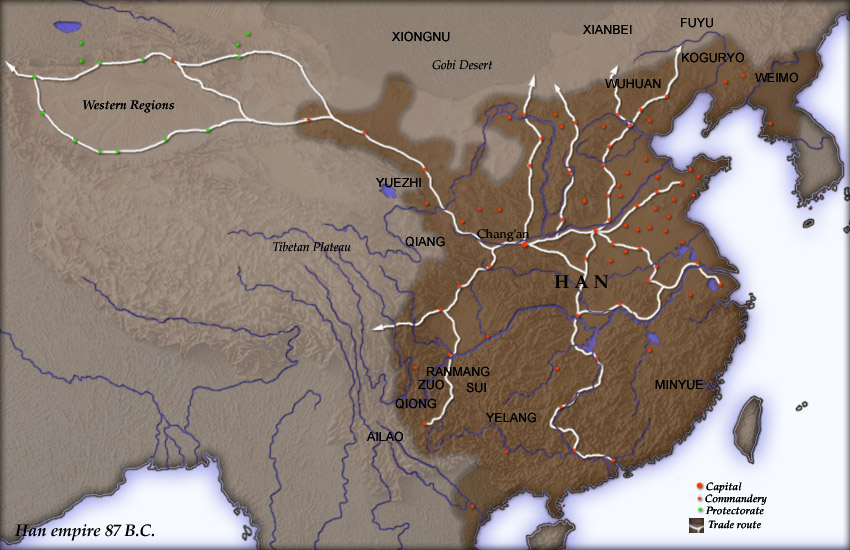As Gallogloich says, the Incas are nearly as famed as the Romans when it comes to road building. Also like the Romans they often were building on top of previously existing road networks. The main North-South highway was 3,700 miles long. https://en.wikipedia.org/wiki/Inca_road_system
There is an interesting phenomenon in Chinese History referred to as the Tang-Song transition. Between the late Tang and early Song there was a shift in population towards Southern China, along with a transition to a cash economy and an economic boom. This affected roads, in previous dynasties most of the main thoroughfares radiated out from the capital. As you can see in this map of Han Dynasty China, all roads led to Chang'an.
After the Song period there was much more interconnection between the provinces and a more complicated road network. On a smaller level street plans in cities changed as well. Pre-Song cities were built on a grid pattern with city limits defined by walls. Many of the new commercial centers that expanded had a more organic (or chaotic) street plan.
It is impossible to talk about transport in China without talking about massive water works projects. The Grand Canal evolved over many years, but was substantially built during the Sui dynasty. There are also many canals built during the Warring States Period.
https://en.wikipedia.org/wiki/Grand_Canal_(China)
https://en.wikipedia.org/wiki/Lingqu_Canal
https://en.wikipedia.org/wiki/Zhengguo_Canal
View Single Post
-
2016-07-10, 08:57 AM (ISO 8601)Halfling in the Playground


- Join Date
- Dec 2015
 Re: Got a Real-World Weapon, Armor or Tactics Question? Mk. XXI
Even the wise cannot see all ends. -J.R.R. Tolkien
Re: Got a Real-World Weapon, Armor or Tactics Question? Mk. XXI
Even the wise cannot see all ends. -J.R.R. Tolkien
Don't destroy it! That alter to Lamashtu, Demon Queen and Mother of Monsters, is historically significant!



 Reply With Quote
Reply With Quote